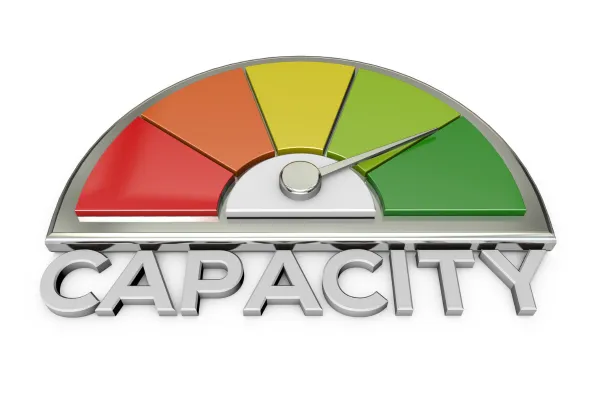
How to Know if Your Church is Drowning in a Capacity Crisis
Most every church I’ve had the privilege of working with has a sincere desire for more people to come to know Jesus. Of course, there are a multitude of methods (and expectations) each church believes should be followed to accomplish this. But, the bottom line is the inherent desire for new believers. Having a congregational desire to reach new people is usually not a common obstacle.
Unfortunately, there is a growing number of churches facing a more common obstacle in reaching new people. This common growth barrier is organizational capacity. Capacity describes the church’s ability to live out its purpose (mission). Congregational capacity refers to the church’s ability, potential to produce, perform, or deploy to fulfill its mission.
While a congregation may have a desire, aspiration, yearning, or thirst for vitality, the congregation may have surpassed their capacity. When a church is unhealthy or in the late organizational life cycle stages, the desire for missional effectiveness might be overcome by their lack of capacity. How do church leaders evaluate if their church is encountering a capacity crisis? Here are a few indicators that your church may be experiencing a capacity limitation:
There are just a handful of people who are expected to lead and organize everything.
The small handful of people who lead and organize everything are burnt out or have left.
There is no present leadership.
Congregants can dream up all types of ministries “we could/should” engage in, but there are not enough people or energy to make it happen.
A common approach to a need (i.e., ministry, service) is to hire someone to care for it.
A culture of “I’ve served my time, so it is someone else’s turn.”
The belief that the only thing needed for church revitalization is for just a young family or two to join the church.
The majority of the congregation is homebound, housed in retirement homes, and/or the average age is over 70.
The overall congregational energy level is low.
A congregation’s belief that a new young pastor is the answer to their waning participation and energy.
These are just a few of the signals your church may be in a capacity crisis. Remember, capacity is not necessarily an indicator of desire. While the desire for vitality might be high, the capacity may be low. It is an important distinction for a leader to ascertain. Trying to propel a high-desire, low-capacity congregation towards change or revitalization can be exhausting and frustrating for a leader. While there is a heart for vitality, the ability, potential to produce, perform, or deploy to make it happen is absent.
Likewise, having capacity without desire can also create obstacles. However, the lacking desire for missional effectiveness and congregational vitality is typically an issue of discipling. Discipleship issues can be overcome. It is much more difficult to overcome capacity barriers. Typically capacity becomes an issue over a prolonged period of time and is not identified or addressed until it becomes critical and often too late to overcome.
If your church is at a crossroads, are you experiencing a capacity crisis? A desire crisis? Do any of the indicators above ring true for your congregation? If so, which one(s)? Is there still enough energy and momentum to overcome those capacity challenges? Discuss your thoughts with other leaders and congregants. What is your faithful next step?

